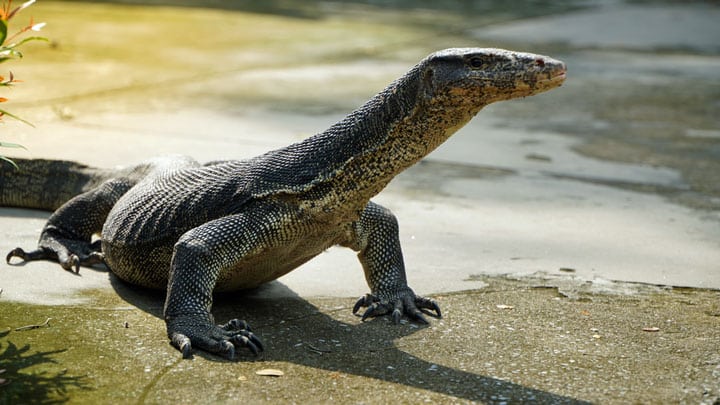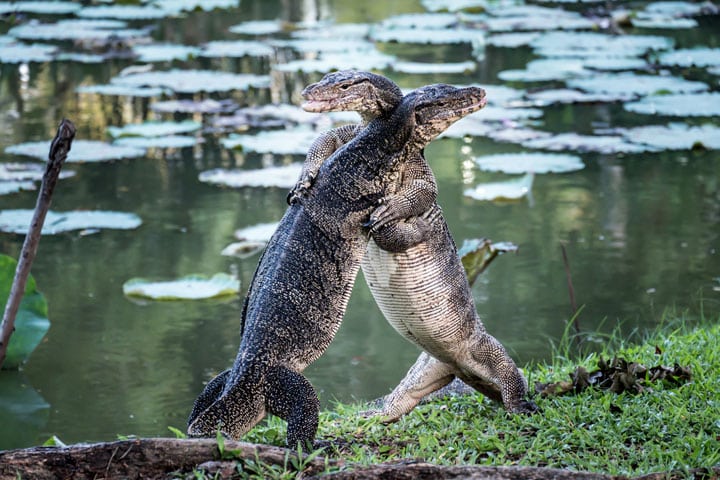
There is no shortage of impressive species in the reptilian world. But few can match the grandeur and intriguing behavior of the water monitor, or as scientifically known, Varanus salvator. With a home base in some Asian countries, including Thailand, the water monitor is a sight that both fascinates and intimidates.
The water monitor is one of the largest lizard species in the world. They can reach a length of up to 3 meters, although most specimens are slightly smaller. They have a robust build with a long, powerful tail that serves as both an oar in the water and a defensive weapon on land.
The water monitor's skin is covered in rough scales, which vary in color from dark black or brown to gray. They have lighter spots or stripes on their body and tail, adding to their striking appearance. Their sharp claws and teeth are undeniable, and they are perfectly equipped for their role as efficient predators.
Living environment and behaviour
Water monitors, as the name suggests, are semiaquatic creatures. They are usually located near bodies of water, such as rivers, lakes, swamps, and mangroves. In Thailand, it is not uncommon to find these animals in urban areas, including parks and even near homes.
The water monitor is active during the day (diurnal) and is known for its intelligence and adaptability. They are excellent navigators on land and in water and are efficient hunters, feeding on a wide variety of prey. Their diet ranges from small mammals and birds to fish, amphibians and even carcasses.

Threats and conservation
Although the water monitor is not considered an endangered species, it faces challenges in some parts of its range. Habitat loss through urban development, hunting for their skin and meat, and general human disturbance are all threats to their survival.
Efforts are being made in Thailand to protect the habitats of these animals and educate the community about the importance of these unique reptiles. Water monitors play an important role in their ecosystem, as they help monitor the population of certain species and help clean up dead animals.
The water monitor is undoubtedly one of the most distinctive and captivating reptiles in Thailand. Although their size and appearance are intimidating


Are those the same creeps that live in Lumpini Park in Bangkok?
Yes, there, but you also sometimes find them in, for example, government house (just kidding). In Thai they are called เหี้ย, hîa (falling tone). Like buffalo (ควาย, khwaai) an insult. Especially with the word âi- (masculine) or ie- in front of it!! For colorful use of language in Thai, read what Tino once wrote about it here on the blog. Or consult Ronald Schütte's book (“The Thai language, grammar, spelling and pronunciation”). Also discussed elsewhere on this blog.
You also come across the water/monitor in political cartoons. You can guess why. You cannot avoid the hîas in Thailand.
Beautiful animals. I also sometimes see them near where I live…usually when they cross a street and unfortunately I also sometimes see victims who have been hit by a car. But I always rejoice when I see these beautiful animals.